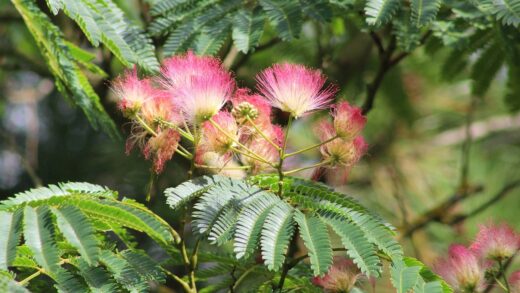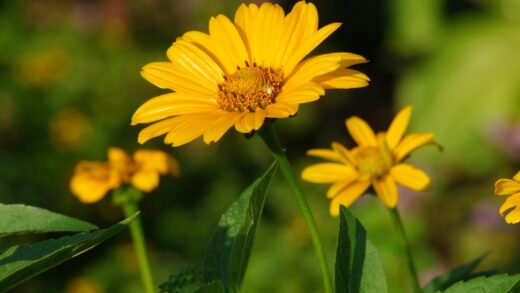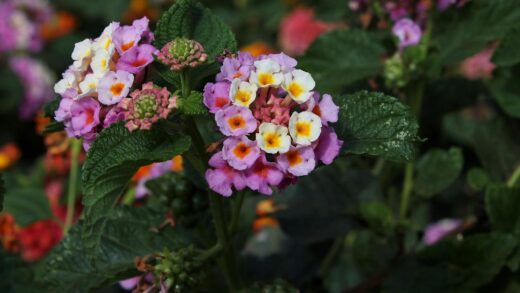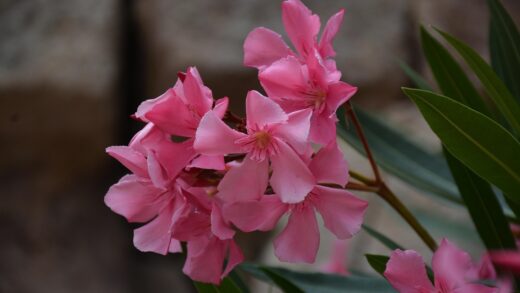The light requirements of Virginia creeper are a key factor in its successful cultivation and play a direct role in its growth rate, foliage density, and, most notably, the intensity of its spectacular autumn coloration. As a highly adaptable and versatile plant, it can grow in a wide spectrum of light conditions, from the full, direct sun of an open wall to the deep shade found beneath a dense tree canopy. Understanding how the vine responds to varying levels of light allows a gardener to select the perfect location to achieve their desired aesthetic and functional goals.
The impact of sunlight on growth and health
Sunlight is the fundamental source of energy for nearly all plants, and Virginia creeper is no exception. Through the process of photosynthesis, the plant uses light energy to convert carbon dioxide and water into sugars, which serve as its fuel for growth and all metabolic activities. The amount of available sunlight, therefore, has a direct and profound impact on the vine’s overall vigor and rate of growth. A plant that receives more light can photosynthesize more actively, resulting in faster and more robust development.
In conditions of high light, such as on a south- or west-facing wall that receives direct sun for most of the day, Virginia creeper will exhibit its most vigorous growth. It will produce a dense, lush curtain of foliage with large, healthy leaves and strong, thick stems. This rapid growth is ideal for situations where the goal is to cover a large, unsightly wall or fence as quickly as possible. The abundant energy produced also contributes to a strong root system, making the plant more resilient and drought-tolerant.
Conversely, when planted in a location with lower light levels, such as on a north-facing wall or in the shadow of a building, the vine’s growth will be noticeably slower and less dense. The leaves may be slightly larger as the plant tries to maximize its light-capturing surface area, but the overall coverage will be sparser, and the stems may be thinner. While the plant can certainly survive and grow in shady conditions, it will not have the same rampant vigor as its sun-drenched counterparts.
From a health perspective, adequate sunlight also plays a role in disease prevention. The drying effect of direct sun on the leaves helps to inhibit the germination and spread of fungal spores, such as those that cause powdery mildew. While the plant can grow in shade, a deeply shaded location with poor air circulation is the most likely environment for fungal diseases to become a problem. Therefore, while the vine tolerates shade, a location with at least some direct sunlight is generally better for its long-term health.
More articles on this topic
Optimal sun exposure for vibrant autumn color
While Virginia creeper is valued for its summer foliage, its true claim to fame is its breathtaking autumn display of fiery scarlets, deep crimsons, and rich burgundies. The single most important factor in achieving this vibrant coloration is sunlight. The brilliant red and purple pigments, known as anthocyanins, are produced by the plant in the autumn in response to a combination of bright light and cool temperatures.
For the most intense and reliable autumn color, the vine should be planted in a location where it receives at least six to eight hours of direct sunlight per day. Full sun exposure provides the plant with the high levels of light energy required to stimulate maximum anthocyanin production. When the cool nights of autumn arrive, the sugars produced during the day become trapped in the leaves, and in the presence of bright sunlight, these sugars are converted into the red pigments that create the spectacular display.
In locations with only partial sun, receiving perhaps four to six hours of direct light, the autumn color can still be quite good, but it may be less intense or less uniform than in a full-sun location. The parts of the vine that receive the most direct sun will likely color up more brightly than the parts that are more shaded. The overall effect will still be attractive, often featuring a pleasing mix of red, orange, and yellow tones.
In a deeply shaded location, however, the autumn foliage is often disappointing for those expecting a blaze of red. Without sufficient bright light to trigger anthocyanin production, the leaves will typically turn a simple, plain yellow before dropping. While this can still provide a pleasant splash of autumn color, it lacks the dramatic and fiery impact that makes the vine so famous. Therefore, if brilliant red autumn color is the primary goal, maximizing sun exposure is the most critical step.
More articles on this topic
Performance in partial shade and low-light conditions
Virginia creeper’s ability to tolerate significant amounts of shade is one of its most useful attributes, making it a valuable problem-solver for difficult areas in the garden. It is an excellent choice for covering a north-facing wall, clothing a shady fence, or climbing up the trunk of a large tree where many other climbing plants would fail. In these low-light conditions, it provides a valuable green texture and a sense of establishment.
In partial shade, which can be defined as an area that receives some direct sun and some shade throughout the day, the vine generally performs very well. It may not grow with the explosive speed of a full-sun specimen, but its growth will still be steady and substantial. This can actually be an advantage in smaller gardens, as the more restrained growth rate makes the vine easier to manage and keep within its designated boundaries. The foliage will be a deep, healthy green throughout the summer.
Even in what might be considered full shade, such as the area beneath a high, dense tree canopy or on the shaded side of a building that receives only indirect light, Virginia creeper can still persist and grow. In these conditions, its growth will be at its slowest, and the coverage will be more open and delicate. It may function more as a subtle green backdrop or a groundcover in these situations. Its ability to thrive where other plants struggle makes it a valuable asset for greening up the darkest corners of a landscape.
When planting in a shady spot, it is particularly important to ensure the soil is well-drained and not overly compacted. Shady areas often stay damp longer, which can increase the risk of root rot if drainage is poor. While the vine will tolerate the low light, it will not tolerate constantly waterlogged soil. Amending the soil with organic matter before planting can help to improve its structure and give the vine a better start in a challenging, low-light environment.
Recognizing symptoms of improper light exposure
Because Virginia creeper is so adaptable, it rarely shows severe symptoms of stress related to light exposure in the way that less tolerant plants might. However, there are subtle clues that can indicate whether its lighting conditions are optimal for the desired outcome. The most obvious of these, as discussed, is the quality of its autumn color. A consistent lack of vibrant red foliage in the fall is a clear sign that the plant is not receiving enough direct sunlight to stimulate pigment production.
In very deep shade, the vine may exhibit signs of etiolation, which is a plant’s response to insufficient light. The stems may become unusually long and thin with large gaps between the leaves, a condition known as elongated internodes. This is the plant’s strategy of “reaching” for a better light source. The foliage may also be a paler shade of green than normal. While the plant is surviving, these are signs that it is not in its ideal environment and its growth is somewhat stressed.
Conversely, while Virginia creeper loves the sun, in extremely hot and arid climates, a plant growing on a sun-baked wall could potentially show signs of stress on the hottest days. This might manifest as leaf scorch, where the edges of the leaves turn brown and crispy. This is not typically a problem in more temperate climates but can occur where intense sun is combined with high temperatures and insufficient moisture at the roots. Ensuring the plant is well-watered during heatwaves can usually prevent this.
Ultimately, the “proper” light exposure for Virginia creeper depends entirely on the gardener’s objective. If the goal is rapid, dense coverage and a spectacular, fiery red autumn display, then full sun is the correct choice. If the goal is to cover a shady wall or create a green backdrop in a low-light area where other plants fail, then shade is the proper exposure. The plant’s versatility allows it to be used effectively in all these scenarios, as long as the expected outcome is aligned with the chosen location.


















